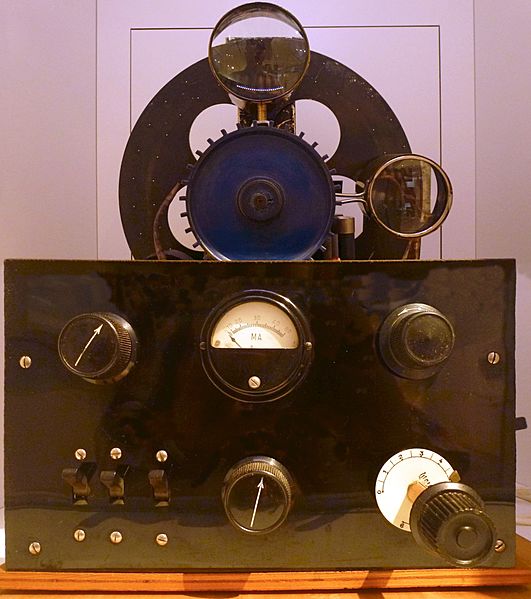Image: Nipkows apparat Tekniska museet

Description: An early mechanical-scan television receiver from the 1930s. Dozens of early stations experimented with television broadcasting using these mechanical-scanning systems during the 1920s and 30s. It uses a Nipkow disk, a spinning metal disk with a spiral pattern of holes in it. A neon light behind the disk, shining through the holes, creates the scan lines of the TV image. The image is only about one inch (3 cm) square so it is viewed through the magnifying lenses shown. The video signal from the receiver (bottom) is applied to the neon light, varying its intensity, to create the different tones of the monochrome image. Different TV stations used different numbers of scan lines and frame rates, and this receiver has two lenses and two neon lights, so it was able to receive TV broadcasts with two different standards, probably a 48 line, 15 frames per second broadcast and a 60 line, 20 frames per second broadcast.
Title: Nipkows apparat Tekniska museet
Credit: Own work
Author: Holger.Ellgaard
Usage Terms: Creative Commons Attribution-Share Alike 3.0
License: CC BY-SA 3.0
License Link: https://creativecommons.org/licenses/by-sa/3.0
Attribution Required?: Yes
Image usage
The following page links to this image:

